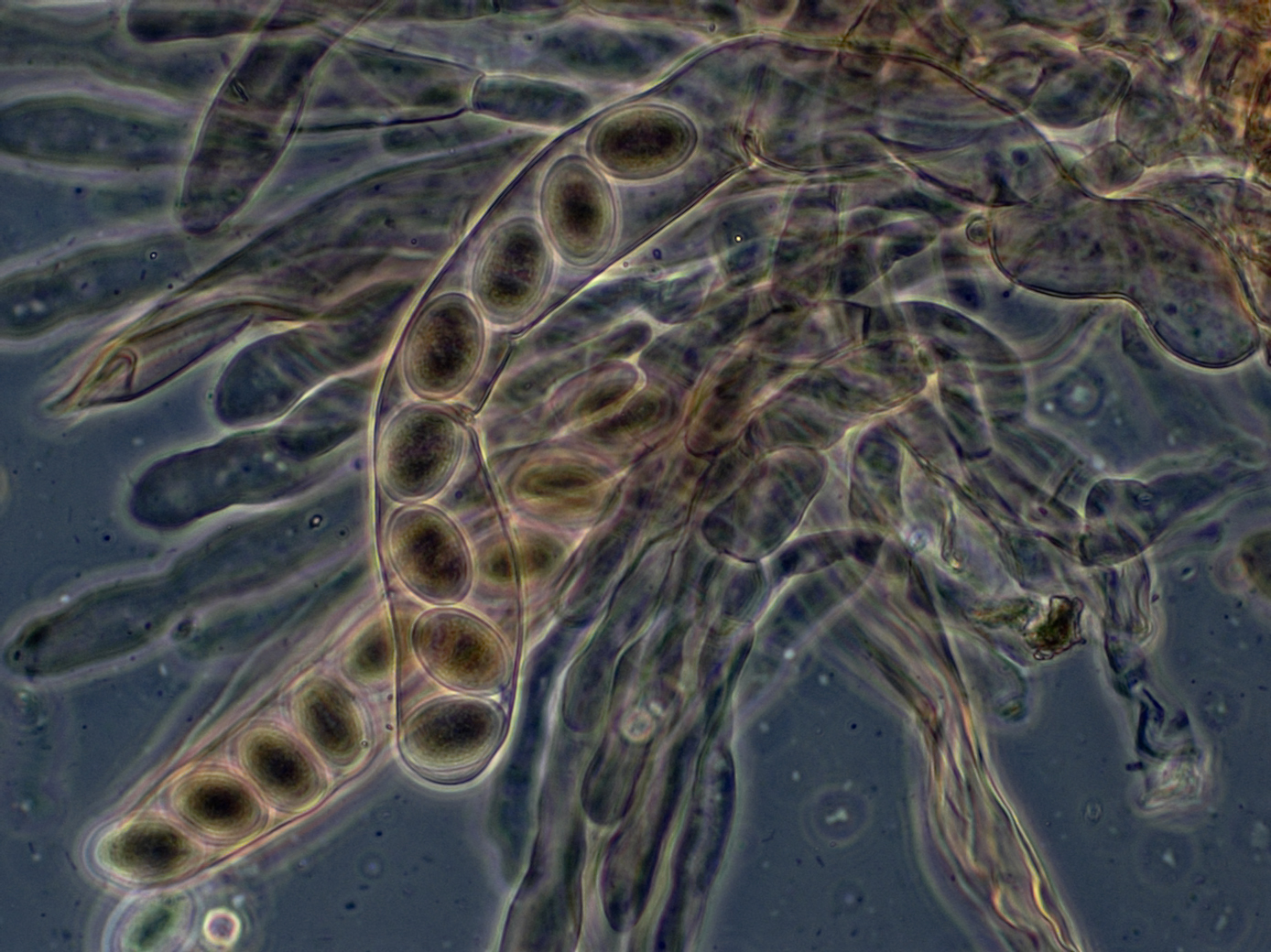|
Scutula Pseudocyphellariae
''Scutula'' is a genus of lichenicolous fungi in the family Ramalinaceae. Taxonomy The genus ''Scutula'' was circumscribed by French botanist Louis René Étienne Tulasne in 1862. The limits of the generic circumscription as well as the limits of certain species in ''Scutula'' was confused for a long time. In 1997, Triebel and colleagues applied the name ''Scutula'' specifically to a group of species growing on hosts of the Lecanorales suborder Peltigerineae, a monophyletic grouping of cyanobacteria-associated lichens. Before this, ''Scutula'' was applied to a diverse set of unrelated lichenicolous fungi featuring hyaline spores with a single septum and sessile apothecia. Once classified in the family Micareaceae, molecular phylogenetic analysis showed ''Scutula'' to be nested within the Ramalinaceae, closely related to the genus ''Toninia''. This familial placement has been accepted in recent large-scale updates of fungal classifications. Description ''Scutula'' species ar ... [...More Info...] [...Related Items...] OR: [Wikipedia] [Google] [Baidu] |
Thallus
Thallus (plural: thalli), from Latinized Greek (), meaning "a green shoot" or " twig", is the vegetative tissue of some organisms in diverse groups such as algae, fungi, some liverworts, lichens, and the Myxogastria. Many of these organisms were previously known as the thallophytes, a polyphyletic group of distantly related organisms. An organism or structure resembling a thallus is called thalloid, thallodal, thalliform, thalline, or thallose. A thallus usually names the entire body of a multicellular non-moving organism in which there is no organization of the tissues into organs. Even though thalli do not have organized and distinct parts ( leaves, roots, and stems) as do the vascular plants, they may have analogous structures that resemble their vascular "equivalents". The analogous structures have similar function or macroscopic structure, but different microscopic structure; for example, no thallus has vascular tissue. In exceptional cases such as the Lemnoid ... [...More Info...] [...Related Items...] OR: [Wikipedia] [Google] [Baidu] |
Scutula Heeri
''Scutula'' is a genus of lichenicolous fungi in the family Ramalinaceae. Taxonomy The genus ''Scutula'' was circumscribed by French botanist Louis René Étienne Tulasne in 1862. The limits of the generic circumscription as well as the limits of certain species in ''Scutula'' was confused for a long time. In 1997, Triebel and colleagues applied the name ''Scutula'' specifically to a group of species growing on hosts of the Lecanorales suborder Peltigerineae, a monophyletic grouping of cyanobacteria-associated lichens. Before this, ''Scutula'' was applied to a diverse set of unrelated lichenicolous fungi featuring hyaline spores with a single septum and sessile apothecia. Once classified in the family Micareaceae, molecular phylogenetic analysis showed ''Scutula'' to be nested within the Ramalinaceae, closely related to the genus ''Toninia''. This familial placement has been accepted in recent large-scale updates of fungal classifications. Description ''Scutula'' species are ... [...More Info...] [...Related Items...] OR: [Wikipedia] [Google] [Baidu] |
Anamorph
In mycology, the terms teleomorph, anamorph, and holomorph apply to portions of the Biological life cycle, life cycles of fungi in the Phylum, phyla Ascomycota and Basidiomycota: *Teleomorph: the sexual reproductive stage (morph), typically a Ascocarp, fruiting body. *Anamorph: an asexual reproductive stage (morph), often Mold (fungus), mold-like. When a single fungus produces multiple morphologically distinct anamorphs, these are called synanamorphs. *Holomorph: the whole fungus, including anamorphs and teleomorph. Dual naming of fungi Fungus, Fungi are classified primarily based on the structures associated with sexual reproduction, which tend to be evolutionarily conserved. However, many fungi reproduce only asexually, and cannot easily be classified based on sexual characteristics; some produce both asexual and sexual states. These problematic species are often members of the Ascomycota, but a few of them belong to the Basidiomycota. Even among fungi that reproduce both sexual ... [...More Info...] [...Related Items...] OR: [Wikipedia] [Google] [Baidu] |
Ascospore
An ascus (; ) is the sexual spore-bearing cell produced in ascomycete fungi. Each ascus usually contains eight ascospores (or octad), produced by meiosis followed, in most species, by a mitotic cell division. However, asci in some genera or species can occur in numbers of one (e.g. '' Monosporascus cannonballus''), two, four, or multiples of four. In a few cases, the ascospores can bud off conidia that may fill the asci (e.g. '' Tympanis'') with hundreds of conidia, or the ascospores may fragment, e.g. some '' Cordyceps'', also filling the asci with smaller cells. Ascospores are nonmotile, usually single celled, but not infrequently may be coenocytic (lacking a septum), and in some cases coenocytic in multiple planes. Mitotic divisions within the developing spores populate each resulting cell in septate ascospores with nuclei. The term ocular chamber, or oculus, refers to the epiplasm (the portion of cytoplasm not used in ascospore formation) that is surrounded by the "bo ... [...More Info...] [...Related Items...] OR: [Wikipedia] [Google] [Baidu] |

